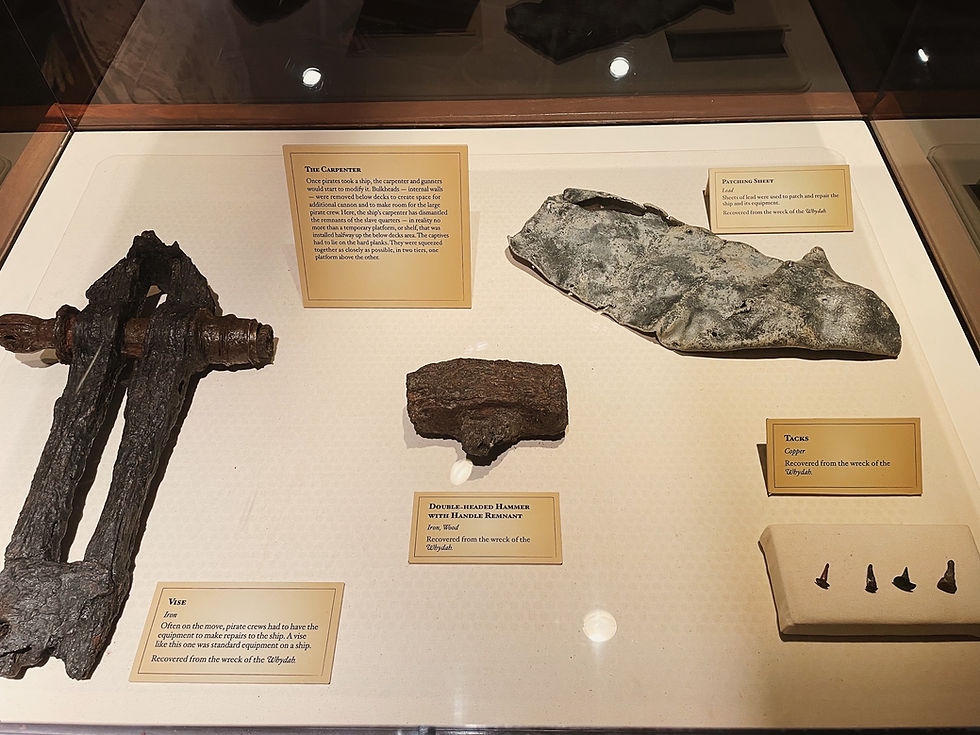‘The Cork Cutter’
- marcsitkin
- Apr 16, 2020
- 3 min read
Updated: May 11, 2023

From “The Book of English Trades, And Library of the Useful Arts.” New ed. London: Printed for C. & J. Rivington, 1827.
by William B. Sprague Reprinted from The Chronicle Volume 1, No. 7, September, 1934
Cork-cutting, according to Rivington ( 1827), was “one of the blackest and dirtiest of trades, and not very profitable either for the master or the journeyman.” The early books do not go into great detail as to the exact methods used, except to say that the peculiarly constructed and “exceedingly sharp” knife is almost the only instrument used. However, Rivington's picture, reproduced herewith, assuming it to be accurate, gives a fair idea of how the work was clone, and it is interesting to learn from the text that the objects hanging from the ceiling are cork life-preservers, “costing a few shillings,” which were turned out by this artisan, in addition to bottle stoppers and barrel bungs.

The mid-19th century writers are more specific, although not altogether in agreement, as to the proper method of cutting. The cork was delivered to the cutters in large square pieces and, if not sufficiently flat, the convex side was exposed to a fire in the “burning yard,” the heat tending to twist the edges of the bark and counteracting the natural bend. “During this operation, attention was paid to smoothing it and covering the defects.” It was next cut into strips, by means of a gauge similar to that shown in the sketch (above), set narrow or wide, according to whether the finished article was to be a cork, bung, or tap, as the different sizes were called. These strips were then cut into squares according to the required length, whether short, long, or full long. This rough cutting was done by one workman who divided up the pieces among several others for finishing.
The knife used for the latter purpose had a blade about six inches long, quite broad, very thin and very sharp. It is illustrated in the accompanying sketch and also in Edward H. Knight’s “American Mechanical Dictionary,” page 623. The cutter either sat alone before a bench, or with three others at a square table which had a raised rim, to prevent the corks from rolling off. Apparently there were two distinct methods employed for rounding the cork. According to Tomlinson, the cutter was supplied with “a board” (see sketch) about twelve inches long, four inches broad, and three inches thick, the upright piece rising about four inches above the surface. The roughly squared piece of cork was held against this upright, to steady it, and, with a “quick twist of the wrist,” a portion was cut away, leaving a rounded surface. The piece was then turned to the point where the first cut ended, and this was repeated until the rounding was complete. The knife was whetted on the board, after every cut, by one stroke on each side of the blade, thus accounting for the two rough depressions in the surface of the board. On the other hand, Ure says that “the workman ought not to draw his knife edge over the cork, for he would thus make misses, and might cut himself, but rather the cork over the knife edge. He should seize the knife with his left hand, rest the back of it upon the edge of the table, into one of the notches made to prevent it from slipping, and merely turn its edge, sometimes upright and sometimes to one side. Then holding the squared piece of cork by its two ends, between his finger and his thumb, he presents it in the direction of its length to the edge: the cork is now smoothly cut into a rounded form by being dexterously turned in the hand.”

From Tomlinson, Charles, 1808-1897. “Cyclopaedia of Useful Arts, Mechanical And Chemical, Manufactures, Mining, And Engineering.” London: J. S. Virtue, 1862.
Both authorities agree that the knife was occasionally sharpened with an ordinary whetstone, and that after being rounded, the two ends of the corks were squared off and the pieces thrown into a basket to be sorted into uniform sizes.
SOURCES OF INFORMATION: “Book of English Trades,” C. & J. Rivington, London, 1827; “Cyclopedia of Useful Arts,” by Chas. Tomlinson, pub. Geo. Virtue, London, 1852; “Dictionary, of Arts, Manufactures and Mines,” by Andrew Ure, Appleton, New York, 1850.




Comments